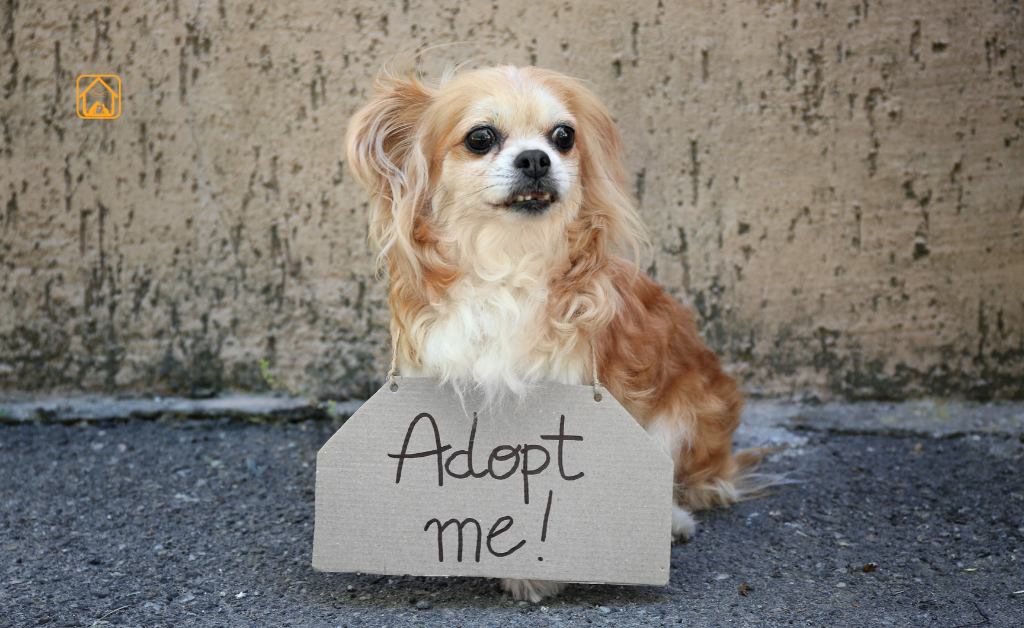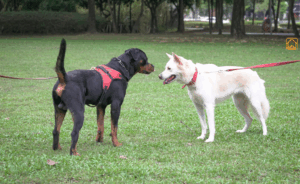Thinking about adopting a dog? It’s a big step and a beautiful one. Whether you’re welcoming your very first pup or giving a second chance to a dog in need, this decision brings more than just tail wags, it brings lasting love and companionship.
Why Adopt a Dog? (Benefits of Dog Adoption vs Buying)
Adopting a dog is more than just bringing home a pet, it’s saving a life. Shelters and rescue groups are filled with dogs of all ages, sizes, and personalities, each looking for a second chance. When you choose dog adoption over buying, you’re helping reduce the demand for unethical breeding practices and making space for other dogs in need.
Adopting a dog often comes with built-in benefits like vaccinations, spaying or neutering, and basic health checks all bundled into one adoption fee. It’s usually more budget-friendly than buying from a breeder or pet store. Rescue dogs often give back more love than you expect. They’re loyal, loving, and trainable as any purchased pup. Sometimes, the dog that chooses you ends up teaching you more about love and patience than you ever imagined.
- Adopting a dog helps reduce overpopulation and gives a homeless pup a second chance at life.
- It supports animal shelters and improves the welfare of dogs in your community.
- Adoption fees are usually much lower than buying, and you often get a healthier, well-vetted dog.
What to Know Before Adopting a Dog
Before you adopt a dog, pause and ask yourself a few honest questions. Are you ready for a 10-15 year commitment? Dogs need daily walks, play, medical care, and lots of attention, especially in the early days. Adopting a senior dog or a rescue can come with extra patience as they adjust, while puppies may require even more time and training.
Think about what kind of dog fits your lifestyle. Puppies are adorable, but they come with sleepless nights, house training, and a ton of energy. Senior or rescue dogs might need more patience and time to settle in but they often give back tenfold in love and gratitude.
Consider your daily routine. Do you travel a lot? Have young kids or other pets at home? Any family members with allergies? Be honest about what you can handle. Talk openly with shelter staff or rescue coordinators , they will help you find the right match.
- Make sure everyone at home is on board and understands the responsibilities.
- Research dog breeds and temperaments to find a good fit, mixed breeds can be wonderful, too!
- Consider the cost of adopting a dog in India or your country, plus ongoing expenses.
Types of Dogs Available for Adoption (Puppy, Adult, Senior, Street, Rescue)
One of the best parts about dog adoption is the variety. Shelters host puppies, adults, seniors, and special-needs dogs. You can also adopt a dog that’s been rescued from the streets or given up by a previous family. Each type has its unique charm:
- Puppies: Cute and playful, but need training and patience.
- Adult dogs: Often house-trained, their personalities are well-known.
- Senior dogs: Calm, loving, and grateful for a soft bed, they make amazing companions.
- Street or rescue dogs: Resilient, loyal, sometimes shy at first but incredibly rewarding to love.
There’s no “one-size-fits-all.” Whether you want to adopt a senior dog or a puppy, shelters can help match you to the right fit.
Step-by-Step Dog Adoption Process (Including India-Specific Guidance)
How to Adopt a Dog? Step-by-Step
- Research: Find local shelters, NGOs, or adoption drives. In India, check with organizations like Blue Cross, CUPA, or your city’s animal welfare groups.
- Visit & Meet: Spend time with different dogs. Ask about their history, health, and behavior. Don’t be shy, bring your list of questions to ask before adopting a dog.
- Application: Fill out an adoption form. Provide ID, details about your home, and maybe references.
- Interview/Home Visit: Many shelters do a brief interview or even visit your home to ensure it’s safe and welcoming. Don’t stress, they just want the best for the dogs.
- Adoption Fee: Pay a nominal adoption fee, which usually covers vaccinations, sterilization, and health checks. (Curious about the cost of adopting a dog in India? It’s often much less than buying, and some adoptions are free for senior or special-needs dogs)
- Paperwork & Registration: Complete the paperwork, and in India, register your new dog with local authorities for legal protection.
- Take Your Dog Home: Get ready for a big, happy change!
- Follow-up: Some rescues offer aftercare support or check-ins. Reach out if you need help during the adjustment period.
Each organization has its own dog adoption process, but these steps are common. If you’re looking to adopt a dog for free or want to adopt a stray dog, ask your local NGOs about options, they often help with street dog rescues and rehoming.
Preparing Your Home and Family for a New Dog
Bringing a new dog home is a little like welcoming a toddler. You’ll need to dog-proof your space, gather supplies, and set up routines. Make sure everyone in the family knows the plan for feeding, walks, and quiet time. If you have other pets, introduce them slowly and under supervision.
- Get essentials: food, bowls, bed, leash, collar, ID tag, toys, and cleaning supplies.
- Prepare a safe, quiet spot for your dog to rest, especially important for rescue dogs or those coming from stressful situations.
- Review the adoption checklist with your family, and decide on ground rules (like where your dog can sleep).
Ever noticed how a new dog will circle the same spot before settling down? It’s their way of finding comfort, give them time and space, and they’ll feel at home.
First 30 Days: Adjustment Period and Setting Your Dog Up for Success
The Rescue Dog Adjustment Period
The first month after dog adoption is full of “firsts”, first walks, first meals, first wags and maybe some first messes. Many newly adopted dogs go through a honeymoon period, where they’re a bit shy or extra quiet. Then, as they relax, their true personalities bloom.
First Day: Keep It Calm and Simple
- Go slow: Your new dog may be nervous, curious, or even a little shut down. Let them explore the house room by room, don’t overwhelm with new faces or noise.
- Skip the party: Hold off on visitors for now. The fewer surprises, the better.
- Introduce bathroom spots: Take them outside to the designated potty area right away. Lots of praise for doing their business in the right spot.
- Keep routines simple: Feed, walk, and rest on a basic schedule. Predictability helps anxious dogs relax.
The First Week: Routine, Patience, and Gentle Guidance
- Establish structure: Stick to regular meal times and walks. Gently teach house rules, where to sleep, what’s off limits, and how to ask to go outside.
- Watch for the honeymoon period: Many rescue dogs are on their best behavior at first, then test boundaries as they settle in. Don’t panic. Stay calm and consistent.
- Monitor health: Schedule a vet check if you haven’t already. Keep an eye out for upset stomachs (common with new environments), sneezing, or signs of stress.
- Bond slowly: Sit quietly together, offer treats, and use positive reinforcement. Let your dog come to you, don’t push for cuddles before they’re ready.
The Adjustment Period: Weeks 2-4 and Beyond
- Stay patient: Rescued dogs may need days, weeks, or months to truly feel at home. Some will hide, others may act out. This is normal. Consistency is your friend.
- Start gentle training: Teach basic cues like “sit,” “stay,” and “come.” Keep sessions short and upbeat. Celebrate every tiny success.
- Watch for signs of stress or fear: Pacing, hiding, barking, or accidents can all be part of the adjustment. If problems persist, consider consulting a trainer or behaviorist.
- Give lots of reassurance: Soft words, treats, and a predictable routine go a long way.
Remember, the first 30 days after dog adoption set the tone for your life together, structure, patience, and love work wonders.
Common Challenges After Adoption and How to Overcome Them
No matter how much you prepare, adopting a dog comes with surprises. Some are heart-melting, like sudden cuddles or tail wags. Others? Not so fun, think chewed-up slippers, nervous barking, or a shy pup hiding under the table for days. Let’s walk through those early challenges and how to help your new dog feel safe, calm, and at home.
Behavioral Hurdles
- Separation anxiety: Many rescue dogs fear being left alone. Start with short absences, leave a comfy item with your scent, and avoid dramatic exits and greetings. Training and patience are key.
- House training hiccups: Accidents are common, especially in the early days. Stick to a strict potty schedule, reward outdoor successes, and never punish mistakes. Crate training helps many dogs feel secure.
- Resource guarding: Some dogs protect food or toys, especially if they’ve known scarcity. Feed in a quiet spot and avoid taking items away by force. Consult a trainer if guarding escalates.
Training & Socialization
- Basic cues: Start with simple commands, “sit,” “stay,” “leave it.” Keep sessions positive and brief. Celebrate even small wins.
- Leash manners: Many shelter or stray dogs aren’t used to leashes. Use treats and patience to encourage loose-leash walking. Consider a harness for extra control.
- Meeting other pets: Go slow when introducing new furry siblings. Use baby gates or leashes for the first meetings and supervise closely. Some tension is normal at first.
Bonding With Your Adopted Dog
- Time and trust: Some dogs bond quickly; others need weeks or months. Offer quiet companionship, gentle words, and let them come to you when ready.
- Play and enrichment: Playtime builds trust and burns off nervous energy. Try tug, fetch, or food puzzles, whatever feels right for your dog’s age and comfort.
- Routine is your friend: Predictable meals, walks, and rest times help dogs feel safe.
Senior Dogs: Special Joys and Challenges
- Comfort first: Senior rescue dogs may need softer bedding, ramps, or more frequent potty breaks.
- Gentle exercise: Shorter, slower walks and light play keep them limber and happy.
- Health monitoring: Keep up with vet checks and watch for signs of pain or illness. Senior dogs are often easier to care for than people expect, they give so much love in return.
Costs and Requirements of Adopting a Dog
Wondering about the costs of adopting a dog? While dog adoption is often much cheaper than buying, there are still costs to plan for, some upfront, some ongoing. Here’s your real-life budget breakdown.
Adoption Fees
- Shelter/Rescue Fees: These usually range from ₹1,000 to ₹10,000 in India (or $50–$300 in the US), depending on the organization, the dog’s age, and inclusions like vaccinations and sterilization.
- Free Adoption: Some organizations waive fees during special drives or for senior/“harder to adopt” dogs. Street dog adoptions may also be free, but you’ll pay for vet checks and vaccinations yourself.
Initial Setup Costs
- Crate/bed: ₹1,000–₹3,000
- Leash, collar, tags: ₹300–₹1,000
- Food and bowls: ₹500–₹2,000
- Toys, grooming tools, cleaning supplies: ₹500–₹1,500
Ongoing Monthly Expenses
- Food: ₹1,000–₹3,000 (size and brand matter)
- Routine vet care: ₹500–₹1,000
- Grooming (if needed): ₹300–₹1,000
- Pet insurance (optional): ₹300–₹600
Unexpected Costs
- Emergency vet visits
- Training or behavioral help
- Boarding or pet-sitting if you travel
Here’s a quick reference table for the cost of adopting a dog in India (your numbers may vary, but this gives you a ballpark):
| Item | Estimated Cost (INR) |
| Adoption Fee | 1,000 – 10,000 (sometimes free) |
| Initial Setup | 2,500 – 7,500 |
| Monthly Upkeep | 2,000 – 5,000 |
| Annual Vet Care | 3,000 – 10,000 |
It’s a big commitment, but the rewards? Absolutely priceless.
FAQs About Adopting a Dog
1. What are the main differences between adopting and buying a dog?
Adopting a dog saves a life and supports rescue efforts, while buying usually supports breeders or pet shops. Adoption is often more affordable and includes initial vet care, while buying can be expensive and sometimes fuels unethical breeding. Adopted dogs are just as loving and loyal as bought ones!
2. Is adopting a dog free, or are there costs involved?
Most shelters charge a nominal adoption fee that covers basic health checks, vaccinations, and sterilization. Some rescue groups may waive the fee for senior or special-needs dogs, but be prepared for ongoing costs like food, vet bills, and training.
3. What should I ask before adopting a dog?
Key questions include: What’s the dog’s history? Any health or behavior issues? Is the dog good with kids or other pets? What food and routine is the dog used to? What support does the shelter provide after adoption?
4. How long does the dog adoption process take?
It varies, sometimes just a few days if you’re prepared, but it can take a week or more if home visits or interviews are required. Each shelter has its own process, so ask for details up front.
5. What’s the rescue dog adjustment period like?
Most dogs need a few weeks to several months to fully settle in. Expect some shyness or nervousness at first, but with patience and structure, your new dog will start to feel at home. Celebrate small milestones, they mean a lot!
6. Can I adopt a stray dog or a dog for free in India?
Yes, many NGOs and animal welfare groups help with the adoption of street dogs for free or a small fee. Make sure the dog is healthy and vaccinated before bringing them home, and ask about support for the transition.
7. What are the red flags when adopting a dog?
Be cautious if you notice signs of neglect in the shelter, lack of transparency about health or behavior issues, or high-pressure tactics to rush adoption. A reputable shelter will answer your questions and support you through the process.
Conclusion
Ready to start your dog adoption journey? You’re about to change a life, and maybe your own, too. For more tips, check out our New Puppy Checklist and Getting a new dog.



